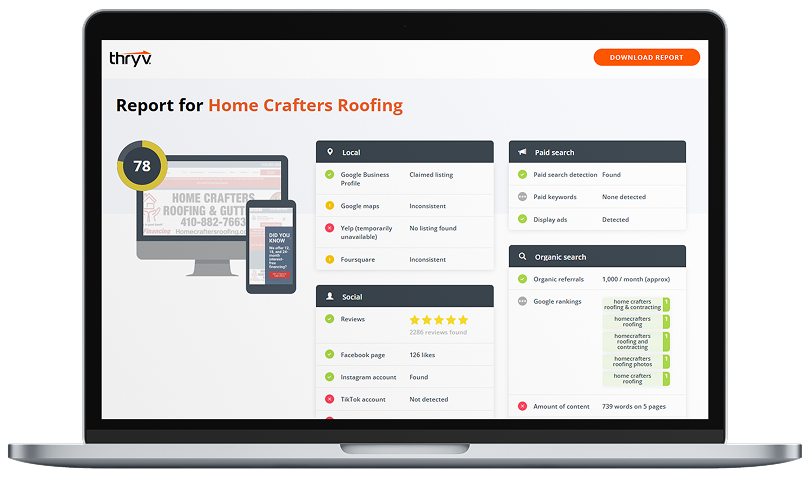Small business owners may find it challenging to stay relevant and engage their audience year-round. However, one way to keep your company top-of-mind is with seasonal content that capitalizes on festive trends throughout the year.
Whether promoting an exclusive sale, preparing for a new season, or tapping into local holiday events, creating content that aligns with the seasons can help you connect meaningfully with your community (and customers).

We’re sharing our expert tips to help you boost productivity, eliminate time-wasting tasks, and more in this free guide.
Download Now
In this guide, we’ll explore how to create and leverage seasonal content to boost your marketing campaigns. You’ll learn how to align your promotions, social media posts, and advertisements with seasons and holidays, making your business feel timely, relevant, and engaging.
Let’s dive in and start making the most of the seasons ahead.
What is seasonal content marketing?
Seasonal content marketing means creating and promoting content that aligns with specific times of the year, holidays, or even special events. This type of marketing takes advantage of recurring seasons, such as spring, summer, fall, and winter, as well as holidays like Christmas, Thanksgiving, or local festivals. By tailoring your messages, promotions, and content to these seasonal shifts, you can make your business feel more relevant, timely, and in tune with your audience’s needs and emotions.
For example, a clothing store might promote cozy sweaters and outerwear during colder months and swimwear and accessories during the summer. Similarly, a restaurant could offer special holiday menus, or a fitness center might run New Year resolution promotions. The key is to create content that resonates with what your audience is thinking, feeling, and needing during a particular time of year.
Seasonal content doesn’t have to be limited to holidays or weather — it can also be linked to broader trends or cultural moments. By tapping into the seasonality of your products or services, you can increase engagement, boost brand visibility, and drive more repeat sales.
Seasonal Content Marketing Strategies
- Plan and create a content calendar.
- Tailor your content to seasonal trends.
- Offer special promotions or discounts.
- Leverage holidays and events.
- Create seasonal visuals.
- Implement user-generated content.
- Focus on seasonal SEO.
- Measure and adjust based on performance.
1. Plan and create a content calendar.
The key to successful seasonal content is planning. Create a content calendar that outlines important dates (like holidays, seasonal trends, or industry-specific events) and the content you’ll publish in advance. This helps ensure that your campaigns are scheduled for the right times, reducing last-minute stress and allowing you to create well-thought-out, engaging content.
Here’s an example of what our content calendar looks like at Thryv:
2. Tailor your content to seasonal trends.
Understand the trends and emotions that come with each season or holiday. For instance, spring could be associated with renewal, and you might want to create content around “fresh starts” or “spring cleaning.” Autumn could tap into themes like coziness or harvest. Align your messaging with what your audience is naturally feeling or interested in at that time of year.
3. Offer special promotions or discounts.
Seasonal sales and discounts are a great way to attract attention during key times of the year. Promote these offers through blog posts, email newsletters, social media, and paid ads. For example, you might have a “Back to School” sale or offer limited-time holiday discounts. Highlight these promotions through engaging, seasonal-themed visuals and copy.
Here’s an example of a 20% discount for St. Patrick’s Day:
4. Leverage holidays and events.
Holidays like Christmas, Valentine’s Day, and Thanksgiving can be powerful opportunities to engage your audience with content and offers that feel timely and relevant. Even if your business isn’t directly related to a holiday, you can still create content that ties into the spirit of the occasion, like offering gift ideas, holiday-themed blogs, or social media contests.
5. Create seasonal visuals.
Seasonal content is more than just text — it’s also about visuals. Change the graphics on your website, create holiday-themed social media posts, and update your branding with seasonal colors and imagery. Whether adding snowflakes for winter or using bright, vibrant colors for summer, aligning your visuals with the season can help reinforce your message and attract attention.
Notice how we include images of Christmas ornaments in this YouTube post to bring more attention to our Holiday Marketing Handbook.
6. Encourage user-generated content.
Encourage your customers to create content that aligns with the season. This is called user-generated content, and it’s great for generating engagement with your brand. Whether posting pictures of how they use your products or sharing their holiday experiences with your brand, user-generated content amplifies your reach and creates a sense of community with loyal customers. Running seasonal contests or hashtag campaigns can encourage more engagement.
7. Focus on seasonal SEO.
Update your website, blog posts, and social media content to feature seasonal keywords. Keywords are words or phrases people search for on Google, like “winter services” or “holiday deals near me.” Including these in your content’ll improve SEO and boost your organic reach.
For example, if you’re a fashion retailer, you might focus on keywords like “summer dresses” or “winter coats” during their respective seasons. As more people start searching for these terms, your content will be more likely to appear since you feature seasonal keywords.
Note: Because these are seasonal keywords, their popularity will fluctuate throughout the year. For instance, more people will search for Thanksgiving in November than March.
8. Measure and adjust based on performance.
As with any marketing strategy, measuring the success of your seasonal content is essential. Use analytics to track how well your posts, emails, or sales campaigns perform during each season. Pay attention to which content generates the most engagement and sales, then use that data to adjust your future campaigns.
Tip: Here’s where marketing software comes in handy. It automatically tracks the performance of each of your marketing channels and creates helpful reports like this one to analyze the data.
Make the Most of Every Season
Seasonal content marketing is more than just following holiday trends—it’s about connecting with your audience throughout the year in meaningful, relevant ways. By aligning your content with what people think, feel, and search for at different times of the year, you can boost engagement, drive sales, and build stronger customer relationships.





